List of Authors
>>About this blog
Recent blog post
|
[Silver]
April 30, 2016 16:00
You already know that Tsukiji Market will move to Toyosu in November this year.
Since its opening in 1935, it will end its 81-year history.
On May 3rd, the Tsukiji Festival will be held in the market.
It's very regrettable, but why don't you go to see the last festival at Tsukiji Market?
Eat a lot of fresh seafood  , vegetables and fruits , vegetables and fruits  from all over the country, and have a goodbye practice. from all over the country, and have a goodbye practice.
For more information, please refer to this website. http://www.tsukiji-market.or.jp/
On May 7th, the annual half price market.
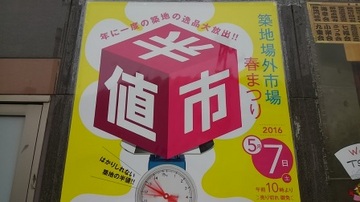
Shop for delicious things    unique to Tsukiji at a shop in the out-of-market market at half price unique to Tsukiji at a shop in the out-of-market market at half price . . 
"If you don't go, loss, loss."
Please refer to this website for information on participating stores. http://www.tsukiji.or.jp/
[Silver]
April 28, 2016 18:00
Tamagozuka, sushi mound, angler mound, live fish mound, etc. are enshrined at Tsukiji's Namiyo Inari Shrine.
In each case, we thank the seafood in our stomach and pray for the Buddha.
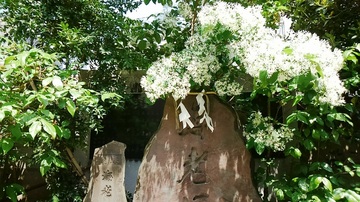
From the top of Ebitsuka, the neat white flowers of Hitotsubago are covered as if they were hugged.

After visiting Nawashi Inari Shrine, visit
In the spring, you can enjoy the hanging cherry blossoms on the sushi mound, the Hitotsubatago of Ebitsuka, and the wisteria of the live fish mound. Silver
[Sam]
April 27, 2016 12:00
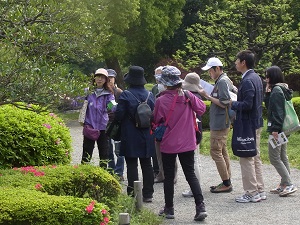 On April 23 (Saturday), "Hamarikyu Nature Walk-Let's Feel Spring-" hosted by the Chuo Ward Environmental Information Center was held at Hamarikyu Onshi Garden. . On April 23 (Saturday), "Hamarikyu Nature Walk-Let's Feel Spring-" hosted by the Chuo Ward Environmental Information Center was held at Hamarikyu Onshi Garden. .
10:00~12:00
Divided into three groups, guided by a nature observation instructor (NACOT), observe the ecosystem of flowers and creatures that bloom in spring and learn about changes in the environment in nature.
Flowers such as azaleas, wisteria, buttons, etc. are currently blooming in the park.
A stunning gradation made by young leaves with slightly different colors depending on the trees.
The lawn of Uchibori Square is also lush, and it is a perfect season for strolling.
While receiving lectures on the matching of the flower color, aroma, and shape of insecticide plants with the shape and habits of visiting insects, the triangular relationship between ladybirds and aphids and ants, symbiosis and co-promotion, stories about natural enemies, etc. Observe.
Because it was a cultural property garden, it was a fieldwork that reaffirmed the scarcity of nature conservation more than expected, and gained new learning.
From the left, Nyoysmire, Kiransou, Murasakisagigoke, Kusaichigo, Snake Ichigo
    
From the left, Sentosou, Kakidooshi, Himeodorikosou, Kusanoou, Murasakikeman
    
[Sam]
April 25, 2016 18:00
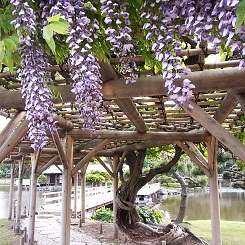 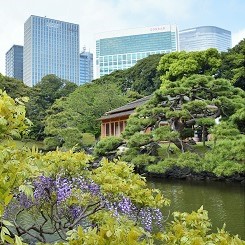
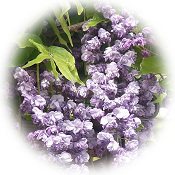 On April 20, the Tokyo Regional Meteorological Observatory announced one of the biological seasonal observation information "Noda Fuji Flowering". On April 20, the Tokyo Regional Meteorological Observatory announced one of the biological seasonal observation information "Noda Fuji Flowering".
One day earlier than normal and two days earlier than last year.
The wisteria trellis set up in each of the "Small-shaped islands" in the middle of the "Oden Bridge" in front of the "Yon Liaokan Ruins" in the "Tide Pond" in the Hamarikyu Onshi Garden are also light purple flowers. It has been colored.
Fuji is a vine deciduous leaf Kimoto of the legume family.
The fragrance is fragrant, the spikes hang down and shaken by the wind, and it is a gorgeous and elegant flower shape.
In endemic species Japan, there are Noda Fuji and Yamafuji, and in general, Fuji seems to refer to Noda Fuji.
<Noda Fuji> The spikes are long, and the vines are (from the top) right rolls
<Yamafuji Temple> The spikes are short, and the vines are left rolls (from the top)
In addition to the familiar mauve color, there are white, peach, light red, etc.
When I asked the garden, it was said that most of the park was Yamafuji, but on the wisteria trellis on the north side of the "Oden Bridge", a rare Noda Fuji type "Yae Kuroryuto" with a slightly different hair color is planted.
Also known as "Peony Fuji".
The stamen is remarkably peony, and it is said to be a unique variety that becomes "peony bloom".
[kimitaku]
April 25, 2016 14:00

I walked through the closed market of Tsukiji Market in spring.
On the day of the opening of the market, Shiomachi Chaya is also deserted.
What was Shiomachi Chaya? When there was a market in Nihonbashi
Transport by ship is actively carried out.
The Nihonbashi River is shallow and low tide makes it impossible to ship.
A place where I was resting while waiting for the high tide.

The fruits and vegetables are only piled up with pallets.
There is a curved building, which is in the middle of Showa.
It is also a remnant of the Japanese National Railways railway line running.
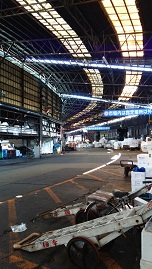
Since its relocation from Nihonbashi in 1935
In about half a year, the Tsukiji Market also moved to Toyosu Market.
All buildings reminiscent of the good times of Showa are also demolished.
Let's take a look at these buildings now.
 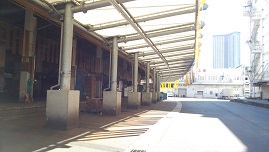
[Sam]
April 21, 2016 14:00
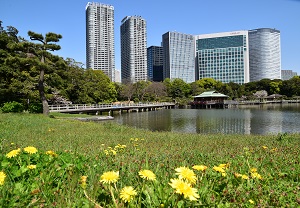
The yellow dandelion flower, which stands out at a glance, is a spring tradition, but can now be found in winter sunsets.
On April 6, the Tokyo Regional Meteorological Observatory announced one of the biological seasonal observation information "dandelion flowering".
By the way, this year's flowering was about the same as normal year, 6 days later than last year.
It has long been said that native species's Kanto Dandelion, which is distributed around the Kanto region, has been pushed by the naturalized species's Seiyo Dandelion in recent years to reduce the population, but 88% of the dandelion collected in Tokyo's 23 wards, seems to have occurred between dandelion and dandelion.
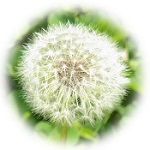 In terms of appearance, the canto dandelion is closely attached to the "total bracts" that support the petals from below and do not Kaide toward the outside, but the "total bracts" of the dandelion wraps the petals It is said that it is distinguished by warping away from the "piece", but there are also intermediate characteristics and complicated. In terms of appearance, the canto dandelion is closely attached to the "total bracts" that support the petals from below and do not Kaide toward the outside, but the "total bracts" of the dandelion wraps the petals It is said that it is distinguished by warping away from the "piece", but there are also intermediate characteristics and complicated.
Dandelions blooming around the pond (Oizumi) with the tide in the garden can be seen in the appearance of Kanto dandelion, but when asked the garden, it is rare in Tokyo because there is not much effort in the cultural property garden He commented that the possibility of dandelion, which is rare in Tokyo, cannot be denied.
I can't forbid nostalgia, probably because of the naturalness being secured.
By the way, there seems to be various theories about the etymology of the dandelion, but there is a play that breaks and wars both ends of the dandelion stem, and since this resembles a drum, a traditional Japanese instrument, the sound of hitting the drum It is said that the theory is derived from the onomatopoeia called "Tan Pompom".
The kanji name "Kamakoei" is derived from the Chinese name and seems to be the name of herbal medicine.
|
Links
|
![]()
![]() , vegetables and fruits
, vegetables and fruits![]()
![]() from all over the country, and have a goodbye practice.
from all over the country, and have a goodbye practice.![]()
![]()
![]()
![]() unique to Tsukiji at a shop in the out-of-market market at half price
unique to Tsukiji at a shop in the out-of-market market at half price![]() .
.![]()
![]()



 On April 23 (Saturday), "Hamarikyu Nature Walk-Let's Feel Spring-" hosted by the Chuo Ward Environmental Information Center was held at Hamarikyu Onshi Garden. .
On April 23 (Saturday), "Hamarikyu Nature Walk-Let's Feel Spring-" hosted by the Chuo Ward Environmental Information Center was held at Hamarikyu Onshi Garden. .











 On April 20, the Tokyo Regional Meteorological Observatory announced one of the biological seasonal observation information "Noda Fuji Flowering".
On April 20, the Tokyo Regional Meteorological Observatory announced one of the biological seasonal observation information "Noda Fuji Flowering".

 In terms of appearance, the canto dandelion is closely attached to the "total bracts" that support the petals from below and do not Kaide toward the outside, but the "total bracts" of the dandelion wraps the petals It is said that it is distinguished by warping away from the "piece", but there are also intermediate characteristics and complicated.
In terms of appearance, the canto dandelion is closely attached to the "total bracts" that support the petals from below and do not Kaide toward the outside, but the "total bracts" of the dandelion wraps the petals It is said that it is distinguished by warping away from the "piece", but there are also intermediate characteristics and complicated.
